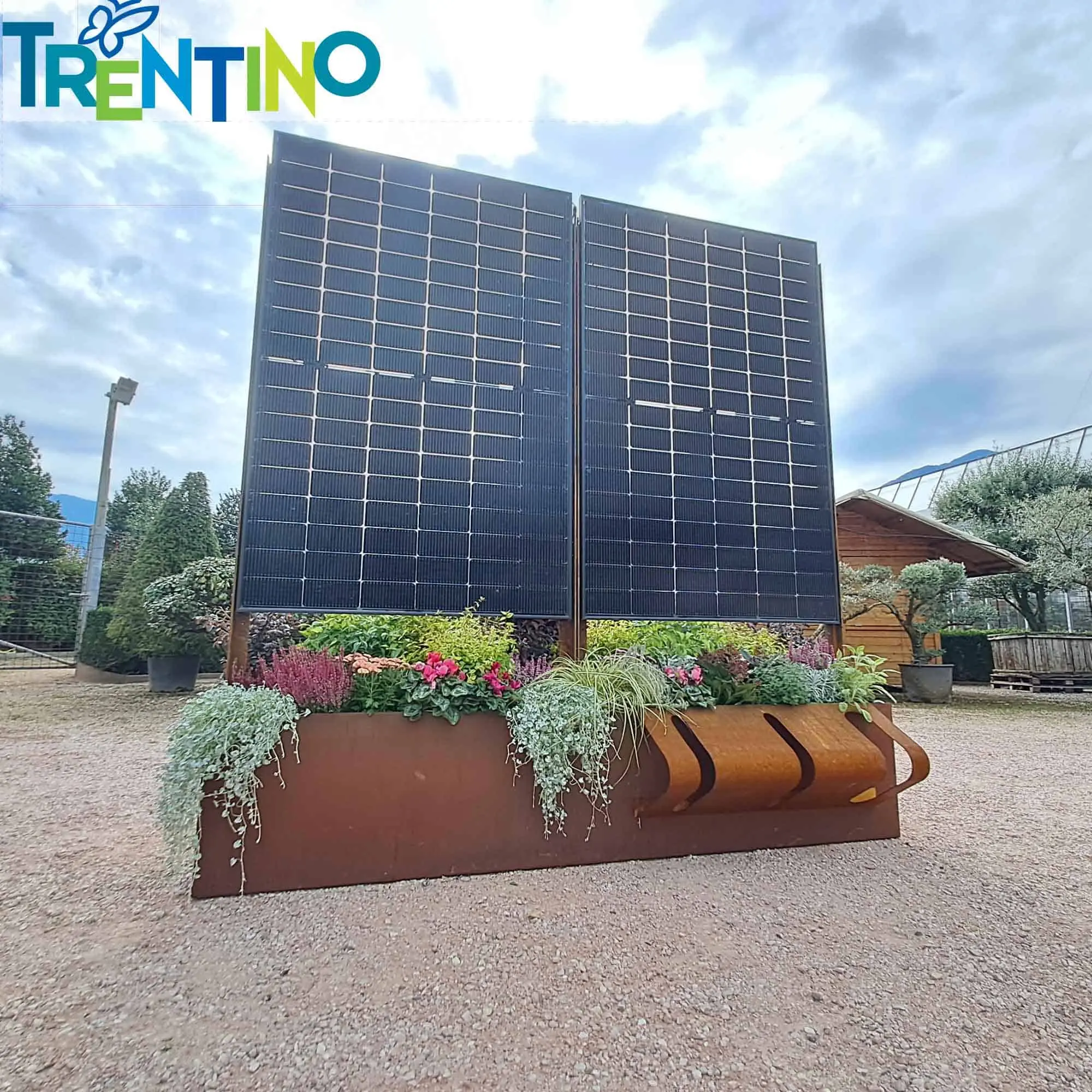📍 Etway S.R.L. | VIA KUFSTEIN 1, 38121 TRENTO (ITALY) | 📞 +39 0461 99 36 43

Photovoltaic Panels: Better Inclined or Vertical?
When installing a photovoltaic system, the choice of panel tilt is a key aspect in optimizing energy production. While the traditional tilt of about 30-33° is designed to maximize solar irradiation during the middle hours of the day, vertical installation (90°) offers unique advantages, especially in settings where space is limited and a more distributed and balanced energy production is desired throughout the year.
Irradiation and Energy Production
- Inclined Panels (30-33°)
This configuration is designed to maximize overall annual production by receiving maximum direct irradiation during the middle hours of the day, particularly in the summer months. However, this solution leads to high peaks in summer and reduced production in winter, precisely when energy demand is greatest. - Vertical Panels (90°)
Although they receive less overall irradiation, their production is more distributed over time. Because of their location, they generate more energy in the fall and winter months, when the sun is lower, and provide more continuous and balanced production throughout the year. This is especially useful for those who have constant consumption and want to avoid summer overproduction that is difficult to manage.
Space Optimization
- Inclined Panels
They require large areas of roof or ground to be installed properly, which can be a limitation for those with small spaces or areas not suitable for photovoltaics. - Vertical Panels
Herein lies one of their greatest advantages: they run high, saving valuable horizontal surface area. This makes them ideal for installation on sound barriers, fences, building facades or existing structures, without sacrificing useful space for other uses.
Efficiency and Bifaciality
- Tilted Panels
They work best under direct irradiation alone, performing less well under diffuse or reflected light conditions. - Vertical Panels with Bifacial Technology
When combined with bifacial cells, vertical panels become even more efficient. They can capture not only direct light, but also light reflected from the ground and surrounding surfaces, increasing output. This advantage is amplified in environments with high reflectance, such as snowy areas or light-colored surfaces.
When is it appropriate to choose Vertical Panels?
Vertical installation is a strategic choice in different contexts:
✅ When space is limited and you need to optimize it as best you can.
✅ When you want a more balanced production, avoiding summer peaks and maximizing yield in the winter months.
✅ When installing bifacial modules in environments with high reflectance, taking advantage of reflected light to increase production.
✅ For installations such as fencing or bounding spaces.
Comparison from PVGIS
The following is a comparison of two PV panel configurations: traditional 33° tilted panel and 90° vertical panel.
The analysis was carried out for the city of Trent (Latitude: 46,096, Longitude: 11,107) using the PVGIS-SARAH3 database.
The results show that: A tilted panel offers higher annual output than one installed vertically, but the latter still maintains a significant yield.
However, the seasonal pattern of production varies greatly between the two configurations. The 33° panel experiences reduced production in the winter months, precisely when energy demand is highest. It also exhibits peak production in July, a time when there is usually less energy demand due to the summer vacation.
The PVGIS system used for this simulation considers only the production of the front side of the panel, without including the contribution of bifaciality. In our specific case, we can therefore expect a 10% higher output, making the 90° vertical panel installation even more advantageous!

Conclusions
Although inclined panels have the advantage of maximizing total production on an annual basis, vertical panels prove to be a highly efficient choice for those seeking more stable and distributed production with better space utilization. In particular, the combination with bifacial modules makes it possible to compensate for less direct irradiation, turning this solution into a truly smart alternative for the future of photovoltaics.

